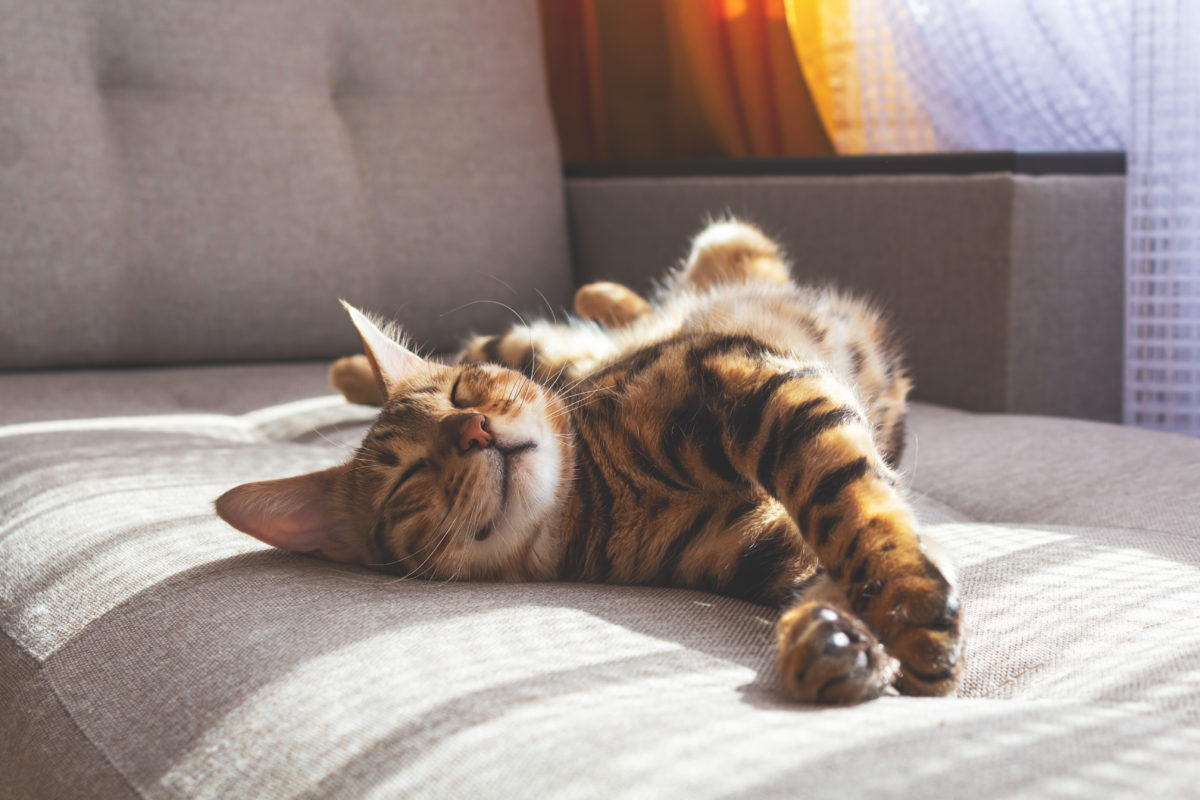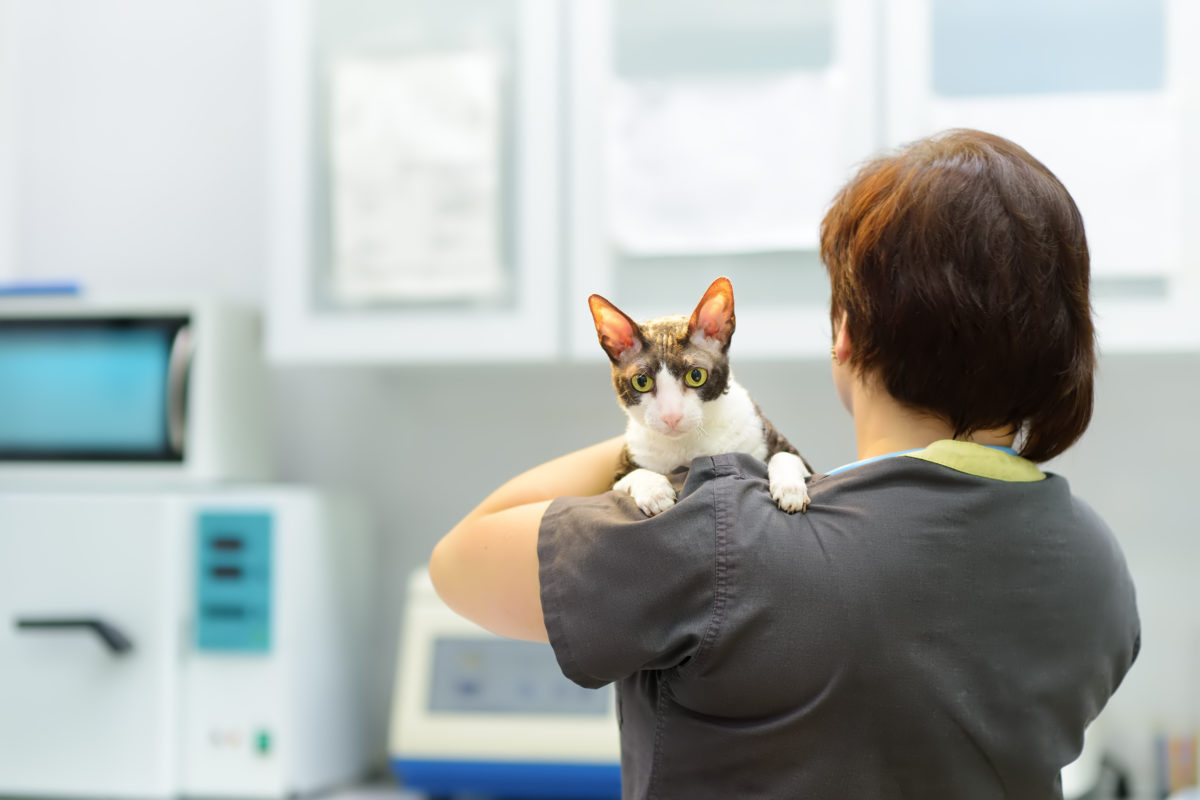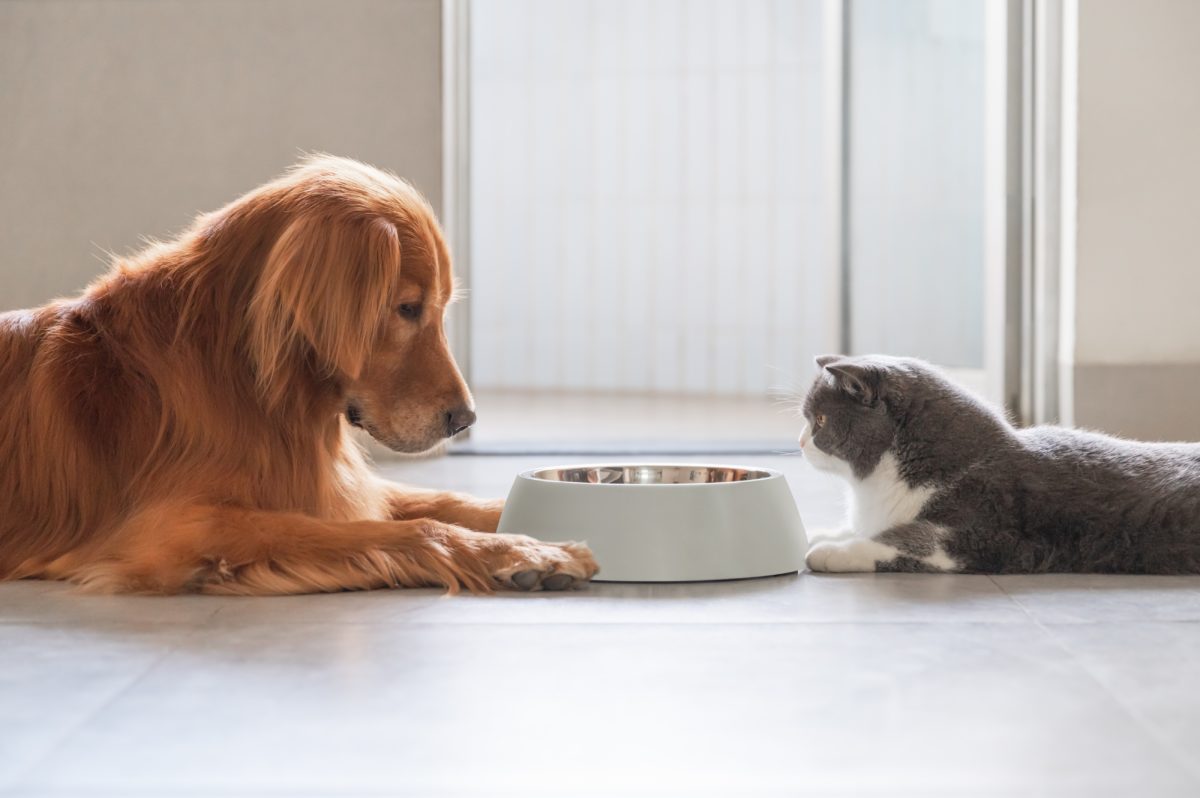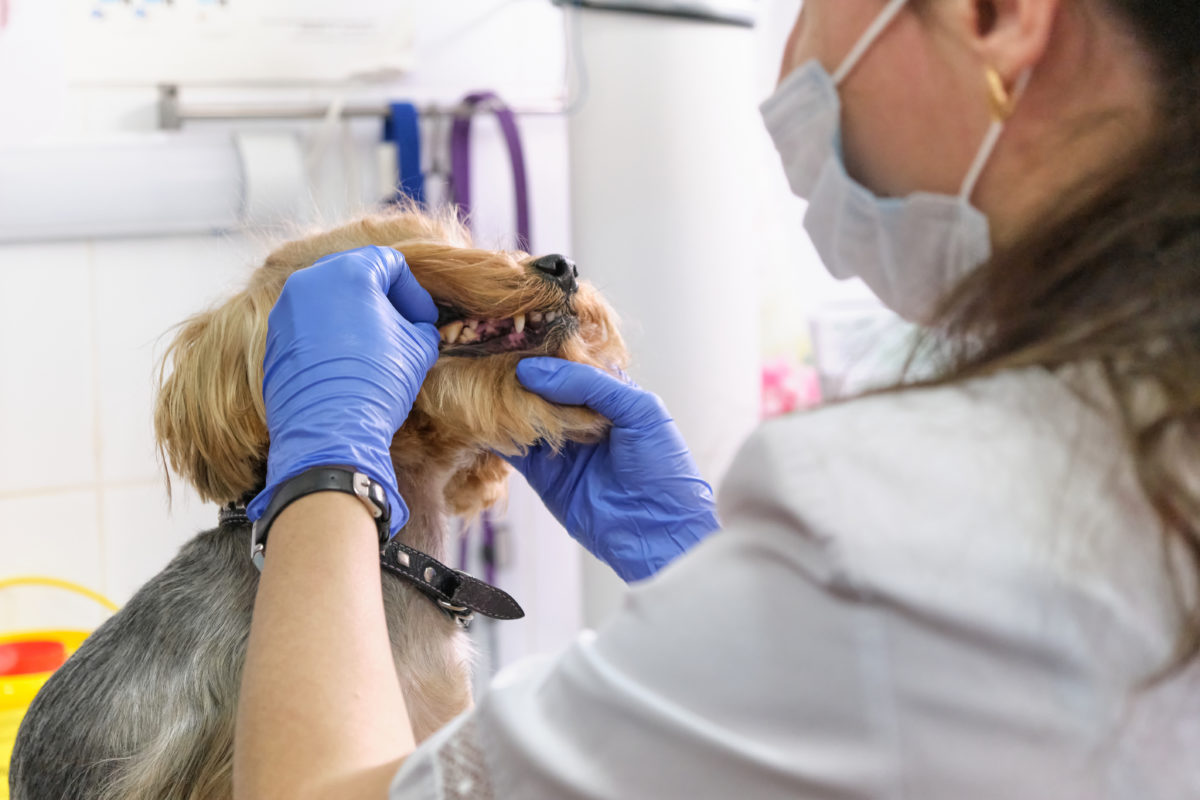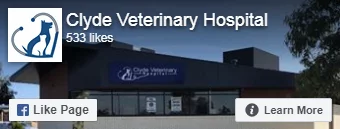Noticing unusual behaviour in your pet? Clyde Vet explains what changes in mood, energy, or habits might mean—and how to spot signs of pain, anxiety, or illness in cats and dogs.
Learn the signs, diagnosis, and treatment options for Cushing’s disease in cats. Discover how to spot early symptoms and when to consult your vet for personalised care.
Learn the signs, causes, and treatment options for Cushing’s disease in dogs. Understand how early diagnosis can improve your pet’s quality of life.
Border Collies are a breed like no other, known for their intelligence, agility, and work ethic. Originally bred to herd livestock, these dogs are energetic, eager to please, and often thrive in active environments. However, owning a Border Collie comes with unique challenges, particularly concerning their mental health, grooming needs, and potential health conditions. In this blog, we’ll delve into these aspects to help you provide the best care for your furry friend.
As pet owners, we all want our furry friends to be healthy and happy, but sometimes pets can face health issues similar to humans. One such issue is diabetes. While it may sound like something that only affects people, dogs and cats can also develop diabetes. If you’re wondering whether your pet can get diabetes, how to recognise the signs, and how to manage it, you’re in the right place.
Can My Dog Or Cat Get Diabetes? Are They Like Humans, Needing Insulin?
Yes, both dogs and cats can develop diabetes, and it can affect them similarly to how it affects humans. There are two main types of diabetes in pets:
- Diabetes Insipidus: This is a rare form of diabetes, often linked to hormonal imbalances. It’s different from the more common type but still something to be aware of.
- Diabetes Mellitus: This is the most common type of diabetes in pets, and it’s similar to type 2 diabetes in humans. Diabetes mellitus occurs when the body is unable to regulate insulin properly, either due to insufficient insulin production or the body’s inability to use it effectively. This causes a spike in blood glucose levels. Pets with this form of diabetes will often require insulin injections to help regulate their blood glucose levels.
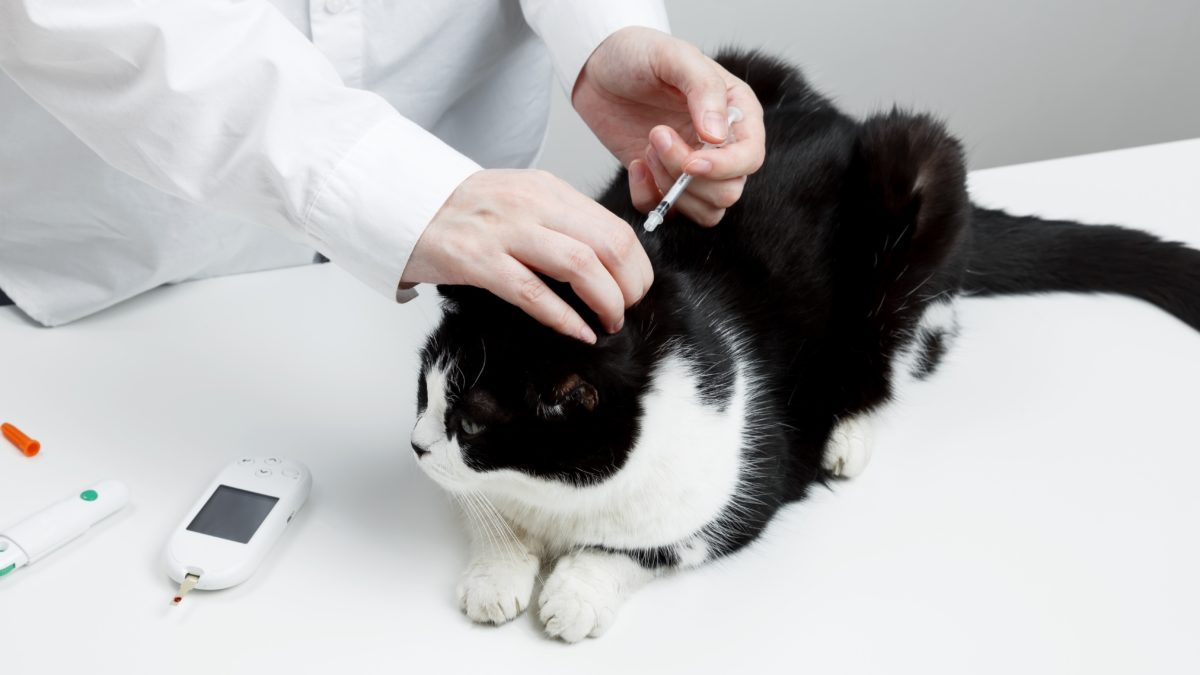
What Do I Need To Look For If My Pet Is Diabetic?
Recognising the signs of diabetes early can help your pet avoid complications and lead to a more successful treatment. Some common symptoms to watch out for include:
- Increased Thirst and Urination: If you find yourself filling your pet’s water bowl more often or noticing an increase in accidents around the house, this could be a sign of diabetes. When blood sugar levels are high, pets will drink more to compensate for dehydration, and they may urinate more frequently.
- Weight Loss: Despite an increase in appetite, your pet may lose weight rapidly. This is because their body is not able to properly utilise glucose for energy, and it begins breaking down muscle and fat stores instead.
- Bad Breath: A distinct, sweet or fruity odor on your pet’s breath is often a sign of diabetes. This can occur when the body starts burning fat for energy due to a lack of glucose.
- Lethargy or Weakness: You may notice that your pet seems more tired or sluggish than usual. The lack of energy from glucose can cause them to be less active.
Why Do I Have To Treat Diabetes As Soon As Possible?
It’s crucial to treat diabetes in pets as soon as possible to avoid serious health complications. If left untreated, elevated blood glucose levels can cause a range of health problems, including damage to vital organs like the kidneys, liver, and eyes. Additionally, untreated diabetes can lead to a severe and life-threatening condition called ketoacidosis, where the blood becomes too acidic, leading to vomiting, lethargy, and potentially coma. Early intervention helps to stabilise blood sugar levels, preventing further complications and ensuring your pet’s long-term health.
What Do I Need To Look After My Diabetic Pet?
Managing a diabetic pet requires dedication, but with proper care, many pets can live happy and healthy lives. Here’s what you’ll need to do to care for your diabetic pet:
- Regular Insulin Injections: If your pet is diagnosed with diabetes mellitus, they will likely need insulin injections. This helps regulate their blood glucose levels. Your veterinarian will teach you how to administer the injections, and it’s essential to stick to the recommended schedule.
- Proper Diet: Feeding your diabetic pet the right food is key to managing their condition. A high-fibre diet that helps regulate blood sugar is often recommended. Work with your vet to determine the best diet plan for your pet’s specific needs.
- Monitor Blood Glucose Levels: Just like humans with diabetes, your pet’s blood glucose will need to be monitored regularly. Your vet will guide you on how to check their glucose levels at home and may suggest blood tests during vet visits.
- Exercise and Weight Management: Regular exercise is essential for diabetic pets, as it helps regulate blood sugar levels and maintain a healthy weight. However, any exercise plan should be tailored to your pet’s individual needs and abilities. Excess weight can worsen diabetes, so maintaining a healthy weight is crucial.
- Frequent Vet Checkups: Regular checkups with your veterinarian are essential for monitoring your pet’s condition. They will adjust insulin doses as needed, and keep track of any potential complications, ensuring the best care possible.
How To Prevent Diabetes In Pets
Preventing diabetes in your pets involves addressing the factors that contribute to the development of the disease. Although you can’t control genetics, there are steps you can take to minimise the risk:
- Maintain a Healthy Weight: Obesity is one of the most significant risk factors for diabetes in pets. Overweight pets are more likely to develop diabetes, as extra body fat can lead to insulin resistance. Keep your pet’s weight in check by feeding a balanced diet and engaging in regular physical activity.
- Encourage Regular Exercise: Physical activity helps keep your pet’s weight under control and promotes proper insulin use in the body. Daily walks for dogs and active playtime for cats are great ways to keep them moving and healthy.
- Provide a Balanced Diet: Feed your pet a nutritious diet tailored to their needs. High-quality pet foods that are low in carbohydrates and high in fibre can help maintain blood sugar levels. Limit treats, and avoid feeding them human food, which is often high in sugar or fat.
- Regular Vet Checkups: Regular veterinary visits are essential to monitor your pet’s health and detect any early signs of diabetes or other issues. This includes checking for early symptoms such as weight loss or excessive thirst, which can be indicators of diabetes.
- Limit Stress: Chronic stress can affect your pet’s overall health, including the development of diabetes. Ensure your pet has a stable environment with a predictable routine and plenty of opportunities for relaxation and play.
- Monitor for Early Signs: Keep an eye on your pet’s behaviour and health. If you notice any changes in appetite, thirst, or urination, or if they begin losing weight without reason, it’s essential to consult a vet right away. Early detection and treatment can prevent diabetes from becoming a more serious problem.
Conclusion
Just like humans, cats and dogs can develop diabetes, and managing the disease is vital to their health and well-being. Recognising the signs early, starting treatment promptly, and following the Clyde Veterinary Team’s recommendations can make a big difference. With proper care, your diabetic pet can lead a full, happy life. If you notice any signs of diabetes in your pet, don’t hesitate to contact Clyde Veterinary Hospital for a proper diagnosis and treatment plan.
Book an Appointment Today
Whether you’re looking for advice, reassurance, or a little extra guidance, the Clyde Veterinary Team is here to support you and your furry family members every step of the way. Reach out to us for expert care tailored to keep your pets happy, healthy, and thriving.
About the Author:
Dr. Irene Mitry is the owner and founder of Clyde Veterinary Hospital, and a vet with a difference. She has not one, but two veterinary degrees, and an abiding passion for preventative pet care. Her life-long love for our animal friends shines through in everything she does, as her client testimonials show. Dr Mitry’s long-standing desire to bring this philosophy of care to life in her own purpose-built veterinary clinic led her to found Clyde Veterinary Hospital in 2018.
Annual blood tests are a vital part of your pet’s healthcare routine, providing a baseline for comparison, enabling early detection of health issues, and uncovering hidden conditions before they become serious. From spotting early signs of disease to ensuring safe anaesthesia during procedures, regular bloodwork helps your pet live a longer, healthier life. Learn why prevention through routine testing is key to your pet’s well-being.
Discover how to choose the best food for your pet with this comprehensive guide. Learn about age-specific diets, dry vs. wet food, and how to monitor your pet's health through nutrition. Ensure your furry friend stays happy and healthy!
How to Keep Your Pet Safe in Hot Weather
As the summer sun shines bright, many dog owners are eager to enjoy outdoor activities with their furry companions. Whether it’s a walk in the park, a beach day, or a game of fetch in the backyard, the warm weather can be a lot of fun for both humans and their pets. But while we can simply put on sunscreen or step into the shade, your dog can’t take off their fur coat to cool down.
Heat stroke in dogs is a serious concern that can be life-threatening if not handled quickly and properly. Understanding the signs of heat stroke, how dogs regulate their body temperature, and knowing what to do in an emergency can help protect your pet from harm and ensure they stay safe during hot weather.
How Do Dogs Cool Down?
Dogs have a few methods of dissipating heat, but they’re not as efficient at cooling off as humans are. Unlike us, dogs don’t sweat to regulate their body temperature. Instead, they rely on:
- Evaporation
Dogs cool down by panting. As they breathe in, the moisture in their noses and mouths evaporates, carrying heat away from their bodies. The faster the panting, the more heat they can release. - Conduction
Your dog will also try to cool down by lying on a cool surface. This helps them absorb heat from their bodies into the cooler floor beneath them. - Convection
When a dog sticks their head out of the car window, they’re using the breeze or moving air to help cool their skin. This helps them regulate their body temperature when air is moving around them.
Signs of Heat Stroke in Dogs
It’s essential to recognise the early signs of heat stroke in dogs so you can act quickly. Heat stroke occurs when your dog’s body becomes unable to cool itself efficiently, and it can be life-threatening. Some common signs to watch out for include:
- Excessive Panting and Drooling
Heavy panting is one of the first signs that your dog is overheating. You may also notice excessive drooling or foaming around their mouth. - Increased Thirst
If your dog is drinking more water than usual or excessively licking their lips, they may be trying to rehydrate due to heat exhaustion. - Lethargy or Disorientation
If your dog seems unusually tired, sluggish, or disoriented, it could be a sign they are suffering from heat stroke. - Vomiting or Diarrhea
Heat stroke can cause gastrointestinal distress, including vomiting or diarrhea. - Heavy, Sustained Breathing
If your dog is struggling to breathe, especially with an open mouth or labored effort, this is a serious warning sign. - Collapse
In the most severe cases, heat stroke can cause your dog to collapse, which requires immediate veterinary attention.
What to Do If Your Dog Has Heat Stroke
If you suspect your dog is experiencing heat stroke, you must act fast. The earlier you intervene, the better the outcome for your dog.
- Hydrate Them
Ensure your dog always has access to fresh water. You can offer them small sips of cool water, but never force them to drink large amounts at once.
- Get Them Indoors
Move your dog to a cool, shaded area, ideally with air conditioning or a fan. Don’t rely on shade alone—your dog needs to be in a cooler environment to recover.
- Cool Them Down
Place your dog on a cool surface like a tile floor or wooden floorboards. If you’re outdoors, wet towels with cool (not cold) water and gently apply them to your dog’s body. Avoid using ice or ice-cold water, as it can cause shock. A gentle stream of cool water from a hose or a fan blowing on your dog can also help.
- Avoid Exercise
Do not attempt to walk your dog or make them exercise in the heat. If your dog seems overheated, it’s best to avoid outdoor activities altogether until temperatures cool down.
- Consider Shaving Your Dog’s Coat or Full Groom
- If your dog has a thick, dense coat (such as a Siberian Husky), it’s important to groom them before the hot weather starts to help remove the winter undercoat. This can improve their ability to regulate body heat and stay cooler.
- For dogs with curly or heavy coats, such as Poodles, trimming their fur during the warmer months can also help them stay more comfortable. However, it’s crucial to consult with a professional groomer or veterinarian to ensure that shaving or trimming is safe for your dog’s
- Seek Veterinary Help Immediately
If your dog’s symptoms don’t improve or worsen, get them to a veterinarian immediately. Heat stroke can cause serious internal damage, and time is of the essence in these cases. Make sure to transport your dog to a vet while providing them with wet towels and air conditioning to prevent further heat stress.
Breeds at Higher Risk for Heat Stroke
While all dogs can experience heat stroke, some breeds are more prone to overheating due to their physical characteristics. Short-nosed breeds, such as Bulldogs, Pugs, and Boxers, have a harder time panting effectively, making them more susceptible to heat stroke. Older dogs, overweight dogs, and those with underlying health conditions are also at a higher risk.
Preventing Heat Stroke in Dogs
The best way to prevent heat stroke is to take precautions before it happens. Here are some tips for keeping your dog safe during the summer months:
- Provide Fresh Water
Always have fresh water available, especially on hot days, and make sure your dog stays hydrated. - Avoid Hot Walks
Try to walk your dog early in the morning or late in the evening when it’s cooler. Avoid walking during the heat of the day, especially on hot pavement, which can burn their paws. - Keep Your Dog Indoors
If the weather is extremely hot, keep your dog inside with access to cool, shaded spaces. Limit outdoor activity during peak heat hours. - Monitor for Symptoms
Pay attention to any signs of heat distress, and be ready to act quickly if needed.
Conclusion
- While summer is a time for fun and outdoor adventures with your dog, it’s important to stay vigilant about the risks of heat stroke. By understanding how dogs dissipate heat and recognising the signs of overheating, you can ensure your dog stays safe, comfortable, and hydrated throughout the warmer months.
- With a little extra care, your dog can enjoy the summer sun without putting their health at risk. If you notice any of the symptoms of heat stroke, act quickly and seek veterinary help if necessary. Together, you and your dog can enjoy many more sunny days!
Need More Help Keeping Your Dog Safe in the Heat?
At Clyde Veterinary Hospital, we’re here to help ensure your dog stays healthy and happy all year round, no matter the weather. If you have any questions about heat stroke prevention or need advice on your pet’s well-being, don’t hesitate to reach out. Our team of experts is available to guide you in keeping your furry friend comfortable during hot weather.
Book an Appointment Today
Whether you’re looking for advice, reassurance, or a little extra guidance, the Clyde Veterinary Team is here to support you and your furry family members every step of the way. Reach out to us for expert care tailored to keep your pets happy, healthy, and thriving.
About the Author:
Dr. Irene Mitry is the owner and founder of Clyde Veterinary Hospital, and a vet with a difference. She has not one, but two veterinary degrees, and an abiding passion for preventative pet care. Her life-long love for our animal friends shines through in everything she does, as her client testimonials show. Dr Mitry’s long-standing desire to bring this philosophy of care to life in her own purpose-built veterinary clinic led her to found Clyde Veterinary Hospital in 2018.
Get your cat Halloween-ready with costume ideas, safety tips, and spooky fun! Celebrate the season with your feline friend the right way.
Heart disease is a serious health concern for both dogs and cats, impacting their quality of life and longevity. Early detection, proper treatment, and effective management are essential for ensuring your furry companions can lead happy and healthy lives. In this blog, we’ll explore what heart disease is, the breeds that are most prone to it, and how to diagnose, treat, and manage these conditions in both dogs and cats.
What is Heart Disease?
Heart disease in pets refers to a variety of conditions that affect the heart’s structure and function. These conditions can be congenital (present at birth) or acquired over time. Common types of heart disease in dogs and cats include:
- Dilated Cardiomyopathy (DCM): A condition that causes the heart to enlarge and weaken, impairing its ability to pump blood effectively.
- Hypertrophic Cardiomyopathy (HCM): Particularly common in cats, this condition involves the thickening of the heart muscle, which can lead to heart failure.
- Mitral Valve Disease (MVD): Common in older dogs, this degenerative condition affects the mitral valve, leading to blood flow issues.
- Heartworm Disease: Caused by parasitic worms transmitted through mosquito bites, this disease can cause severe damage to the heart and lungs in both dogs and cats.
Prone Breeds
Certain breeds are genetically predisposed to heart disease.
Dogs:
- Cavalier King Charles Spaniel: Particularly susceptible to mitral valve disease.
- Doberman Pinscher: Prone to dilated cardiomyopathy.
- Boxer: Often affected by arrhythmogenic right ventricular cardiomyopathy.
- German Shepherd: Can develop dilated cardiomyopathy and other heart issues.
Cats:
- Maine Coon: Prone to hypertrophic cardiomyopathy.
- Ragdoll: Another breed at higher risk for HCM.
- British Shorthair: May also be affected by heart issues, particularly HCM.
- Sphynx: This breed has a higher incidence of HCM.
While these breeds are at higher risk, any dog or cat can develop heart disease, making regular veterinary check-ups essential.
Clinical Signs of Heart Disease in Dogs and Cats
Recognising the signs of heart disease early can be crucial for effective treatment and management. Both dogs and cats exhibit various symptoms that may indicate a heart condition. Here’s what to look for:
Common Clinical Signs in Dogs:
- Coughing: Persistent coughing, especially during exercise or at night, can indicate fluid buildup in the lungs.
- Difficulty Breathing: Labored breathing or increased respiratory rate, especially when at rest.
- Fatigue and Weakness: Reduced stamina or lethargy; your dog may tire more quickly during walks or play.
- Fainting or Collapse: Episodes of fainting (syncope) can occur due to inadequate blood flow.
- Abdominal Swelling: Bloating or a distended abdomen may indicate fluid accumulation.
- Poor Appetite or Weight Loss: A decrease in appetite or unintentional weight loss can signal health issues.
- Cold Extremities: Cold or blue-tinged gums and paws may indicate poor circulation.
- Increased Thirst or Urination: Changes in drinking and urination habits can be related to heart disease.
Common Clinical Signs in Cats:
- Labored Breathing: Rapid or difficult breathing, often accompanied by open-mouth breathing.
- Coughing: While less common than in dogs, some cats may cough if heart disease affects lung function.
- Lethargy: Increased fatigue or a lack of interest in play or normal activities.
- Weight Loss: Unexplained weight loss can be a sign of chronic health issues, including heart disease.
- Poor Grooming: Cats may groom less, leading to an unkempt appearance.
- Abdominal Distension: Swelling in the abdomen due to fluid buildup.
- Fainting or Weakness: Similar to dogs, fainting or weakness can occur in cats with heart conditions.
- Sudden Changes in Behaviour: Increased hiding, aggression, or other behavioural changes can be indicative of discomfort or distress.
Diagnosis of Heart Disease
Diagnosing heart disease in pets typically involves a combination of the following methods:
- Veterinary Examination: A thorough physical exam where the veterinarian checks for heart murmurs, irregular heartbeats, and other signs of heart disease.
- Blood Tests: These can help identify underlying health issues that may contribute to heart problems.
- X-rays: Chest X-rays can reveal the size of the heart and any fluid in the lungs, indicating heart failure.
- Ultrasound: An echocardiogram provides a detailed look at the heart’s structure and function, allowing for a more accurate diagnosis.
- Electrocardiogram (ECG): This test records the electrical activity of the heart, helping to detect arrhythmias.
Treatment Options
Once diagnosed, heart disease can be managed with various treatment options tailored to the pet’s specific condition and needs:
-
Medications
- Diuretics: Help reduce fluid buildup in the lungs and other tissues.
- ACE Inhibitors: Lower blood pressure and decrease the workload on the heart.
- Beta-Blockers: Can help control heart rate and rhythm.
- Pimobendan: A medication that improves heart contractility and helps with heart failure.
Always consult your veterinarian before starting any medication, as dosages and types can vary based on individual health conditions.
-
Environmental Management
In addition to medications, lifestyle changes can significantly improve the quality of life for pets with heart disease:
- Diet: A heart-healthy diet low in sodium and rich in essential nutrients can support heart function. Some pets may benefit from prescription diets designed for heart health.
- Exercise: While exercise is essential, it should be tailored to the pet’s condition. Short, moderate walks for dogs and play sessions for cats can help maintain fitness without overexertion.
- Weight Management: Keeping your pet at a healthy weight reduces strain on the heart. Regular monitoring and adjustments to diet and exercise are crucial.
- Stress Reduction: Minimise stressors in your pet’s environment. Create a calm and safe space for them to relax.
- Regular Check-ups: Frequent vet visits will allow for monitoring of the condition and timely adjustments to treatment as necessary.
Conclusion
Heart disease in dogs and cats can be challenging, but with early detection and appropriate management, many pets can continue to lead fulfilling lives. Regular veterinary check-ups, awareness of breed predispositions, and attention to lifestyle factors are crucial components of effective heart disease management.
If you suspect your pet may be showing signs of heart issues—such as coughing, difficulty breathing, lethargy, or decreased appetite—don’t hesitate to contact us.
Your proactive approach can significantly impact your pet’s health and happiness, ensuring they remain your loyal companion for years to come.
Book an Appointment Today
Whether you’re looking for advice, reassurance, or a little extra guidance, the Clyde Veterinary Team is here to support you and your furry family members every step of the way. Reach out to us for expert care tailored to keep your pets happy, healthy, and thriving.
About the Author:
Dr. Irene Mitry is the owner and founder of Clyde Veterinary Hospital, and a vet with a difference. She has not one, but two veterinary degrees, and an abiding passion for preventative pet care. Her life-long love for our animal friends shines through in everything she does, as her client testimonials show. Dr Mitry’s long-standing desire to bring this philosophy of care to life in her own purpose-built veterinary clinic led her to found Clyde Veterinary Hospital in 2018.
As our beloved furry friends age, they may face unique challenges and health issues. Senior dogs and cats deserve special attention and care to ensure they live comfortable and fulfilling lives in their golden years. In this blog post, we’ll explore the common issues faced by senior pets, including diseases and health concerns, and provide practical advice for caring for them.
Understanding Senior Pets: Pets are considered seniors typically around the age of 7 for dogs and 10 for cats, although this can vary based on breed and size. As they age, they may experience changes in behaviour, mobility, and overall health. It’s essential for pet owners to be aware of these changes and provide appropriate care and attention.
Common Health Issues:
- Arthritis: Both dogs and cats can develop arthritis as they age, leading to joint pain and decreased mobility. Providing comfortable bedding and regular, gentle exercise can help alleviate symptoms.
- Dental Disease: Senior pets are prone to dental issues such as gum disease and tooth decay. Regular dental check-ups and teeth cleanings are crucial for maintaining oral health.
- Kidney Disease: Chronic kidney disease is prevalent in senior cats and dogs and can lead to dehydration, weight loss, and lethargy. Specialized diets and regular vet visits are essential for managing this condition.
- Cognitive Dysfunction: Just like humans, pets can suffer from cognitive decline as they age, leading to confusion, disorientation, and changes in behavior. Environmental enrichment and mental stimulation can help slow down cognitive decline.
- Cancer: Senior pets are more susceptible to various types of cancer. Early detection through regular veterinary exams is vital for prompt treatment and management.
Advice for Senior Pet Care:
- Regular Veterinary Check-up and blood tests: Schedule regular check-ups with your veterinarian to monitor your senior pet’s health and address any concerns promptly.
- Balanced Diet: Feed your senior pet a balanced diet tailored to their specific needs, including supplements if recommended by your vet.
- Exercise: Maintain a regular, low-impact exercise routine to keep your senior pet active and help manage weight.
- Comfortable Environment: Create a comfortable and safe environment for your senior pet, including soft bedding and easy access to food, water, and litter boxes.
- Mental Stimulation: Engage your senior pet with interactive toys and puzzles to keep their minds active and stimulated.
- Quality Time: Spend quality time with your senior pet, providing love, attention, and companionship.
Conclusion: Senior dogs and cats bring immense joy and companionship to our lives, and it’s our responsibility as pet owners to ensure they receive the care and attention they need as they age. By understanding the common health issues faced by senior pets and following practical advice for their care, we can help them enjoy their golden years to the fullest. Remember, with proper care and attention, our senior pets can continue to enrich our lives for many years to come.
Book an Appointment Today
About the Author:
Dr. Irene Mitry is the owner and founder of Clyde Veterinary Hospital, and a vet with a difference. She has not one, but two veterinary degrees, and an abiding passion for preventative pet care. Her life-long love for our animal friends shines through in everything she does, as her client testimonials show. Dr Mitry’s long-standing desire to bring this philosophy of care to life in her own purpose-built veterinary clinic led her to found Clyde Veterinary Hospital in 2018.
In the realm of designer dog breeds, few are as charming and beloved as the Cavoodle. With its adorable appearance and affectionate demeanour, this crossbreed between a Cavalier King Charles Spaniel and a Poodle has captured the hearts of dog lovers worldwide. If you’re considering welcoming a Cavoodle into your home or already have one, this guide will provide invaluable insights into nurturing and caring for your furry friend.
Understanding the Cavoodle
Origin and Characteristics
The Cavoodle, also known as Cavapoo, is a crossbreed renowned for its intelligence, gentle nature, and hypoallergenic coat. Originating in the United States during the 1950s, they quickly gained popularity due to their combination of desirable traits from both parent breeds. They typically exhibit a friendly disposition, making them ideal companions for individuals and families alike.
Essential Care Tips
Feeding
Maintaining a balanced diet is crucial for the health and well-being of your Cavoodle. Opt for high-quality dog food formulated for small breeds, and ensure it meets their nutritional requirements. Consult with your veterinarian to determine the appropriate portion sizes and feeding schedule based on your Cavoodle’s age, size, and activity level. Additionally, provide fresh water at all times to keep them hydrated.
Training
Cavoodles are intelligent and eager to please, making them relatively easy to train. Start with basic obedience commands such as sit, stay, and come, using positive reinforcement techniques like treats and praise. Consistency and patience are key when training your Cavoodle, as they respond best to gentle guidance and encouragement. Consider enrolling them in puppy classes or working with a professional trainer to enhance their socialization skills and behaviour.
Grooming
Due to their Poodle lineage, Cavoodles have a curly or wavy coat that requires regular grooming to prevent matting and tangling. Brush their fur several times a week using a slicker brush or comb to remove loose hair and debris. Additionally, schedule professional grooming sessions every 4-6 weeks to trim their coat, clip their nails, and clean their ears. Don’t forget to brush their teeth regularly and schedule dental check-ups to maintain their oral health.
Exercise
Despite their small size, Cavoodles are moderately active dogs that enjoy daily exercise to keep them mentally and physically stimulated. Take them for brisk walks, engage in interactive play sessions, or let them romp in a fenced yard to burn off excess energy. Incorporate mentally stimulating activities like puzzle toys and obedience training to prevent boredom and encourage their natural intelligence.
Health Considerations
Common Health Issues
While generally healthy, Cavoodles may be prone to certain inherited health conditions from their parent breeds, including:
- Mitral Valve Disease
- Hip Dysplasia
- Progressive Retinal Atrophy
- Luxating Patella
Other common health condition they can Have ;
- Ear infection
- Dental disease
- Skin problems
- Separation anxiety
Regular veterinary check-ups, vaccinations, and preventive care are essential for early detection and management of any health concerns. Maintain a consistent vaccination and deworming schedule, and be vigilant for any changes in behaviour, appetite, or mobility that may indicate underlying health issues.
Conclusion
Caring for a Cavoodle requires dedication, patience, and a deep appreciation for their unique personality and needs. By providing proper nutrition, training, grooming, and healthcare, you can ensure a fulfilling and enriching life for your beloved companion. Remember, the bond between a Cavoodle and its owner is built on love, trust, and mutual respect, making every moment together a cherished experience.
Book an Appointment Today
About the Author:
Dr. Irene Mitry is the owner and founder of Clyde Veterinary Hospital, and a vet with a difference. She has not one, but two veterinary degrees, and an abiding passion for preventative pet care. Her life-long love for our animal friends shines through in everything she does, as her client testimonials show. Dr Mitry’s long-standing desire to bring this philosophy of care to life in her own purpose-built veterinary clinic led her to found Clyde Veterinary Hospital in 2018.
As Easter nears, we look forward to celebrating with family, seeing friends and of course, delicious treats. However, it’s important to remember the risks these goodies can pose to our furry friends, as they can be toxic foods for dogs and cats.
Dogs and Chocolate:
It’s no secret that chocolate is a hazard to a dog’s health. Chocolate contains substances like theobromine and caffeine, harmful to dogs when ingested in large amounts. Additionally, the colourful wrappers on lollies can also be hazardous if swallowed, potentially causing gastrointestinal issues and might even require a visit to an emergency vet.
While chocolate is widely known to be harmful to dogs, it’s important to note that cats are also at risk. Therefore, it’s crucial to keep all chocolates out of reach of both dogs and cats to prevent any potential health issues associated with cats and chocolate ingestion.
You can keep your pets healthy by:
- Storing chocolates and lollies out of reach.
- Let guests know about the dangers to pets.
- Dispose of wrappers properly.
- Offer safer alternatives for dogs to occupy themselves with like dog toys and treats.
Candy Wrappers and Your Dog’s Health
But it’s not just the toxic food for dogs itself that can pose a threat, the colourful wrappers can also be harmful when ingested. One way to notice this happening is your pet breathing heavily.
The sharp edges of the foil on wrappers pose another danger to dogs, such as tearing or puncturing the digestive tracts that might require an emergency visit to the vet.
Pet Holiday Stress
All the excitement around the easter period can be exciting, but can also be anxiety inducing and lead to a very stressed dogs and cats.
It’s good to remember that, like us, dogs and cats can be overwhelmed too, and that puppies and kittens can experience stress too. So during the easter holidays, your pets will thank you for checking in on them particularly when their normal environment is being invaded by unfamiliar people, which will mean you’ll have a much less stressed pet..
Easter Plants and Flowers:
Easter is a time for flowers aplenty, with lilies and daisies being some of the most popular during easter celebrations. However, for cats, lilies are particularly harmful, all parts of the lily plant contain toxins that can cause severe damage if eaten.
Symptoms of a cat eating lily flowers include:
- Vomiting
- Loss of appetite
- Lethargy
What to do if your Cat or Dog is Unwell
Contact Clyde vet or us immediately for guidance if you believe your cat or dog has eaten poisonous foods or is displaying any of these symptoms. Certain situations, such as a pet ingesting toxic foods or displaying alarming symptoms like your pet breathing heavily, may necessitate an immediate visit to an emergency vet for quick treatment.
Acting quickly can be crucial for a successful recovery, so don’t hesitate to get help if you have concerns about your cat or dog’s health.
Pet Toxic Food Treatment at Clyde Veterinary Hospital
You can trust our team of experienced vets to look after your pet if they’ve ingested harmful food or plants. Give our team a call on (03) 9052 3200 or make a booking online to get started.
Cats in heat, also known as the feline heat cycle, are a part of a female cat’s reproductive journey. In this article, we’ll explore what happens when a female cat goes into heat, how to recognise the signs of a cat in heat, and when you should seek advice from your vet.
What is a Cat in Heat?
The feline heat cycle, often referred to as “oestrus,” signifies the fertile period in a un-desexed female cat’s reproductive cycle. It’s important to note that ‘in heat’ has nothing to do with body temperature of heatstroke.
When Will My Cat be in Heat?
A female cat’s first heat cycle typically begins when she reaches puberty, this is usually around 6 months of age. However, this age varies from one cat to another. This means non-desexed female cats can become pregnant as early as 5 to 9 months of age.
Unlike female cats, male cats, known as “toms,” don’t won’t ever go into heat. However, they can sense and respond to a female cat in heat as part of their courtship behaviour.
Cats are what’s called ‘seasonally polyoestrus’, meaning they can experience multiple heat cycles during a breeding season. Whether these cycles result in pregnancy depends on mating with a male tom.
Cats are super breeders! Queens can have two litters of kittens in a single breeding season. This can quickly add up; if the average litter of kittens is 3 to 5 or more, then an un-desexed female can have as many as 100 to 200 kittens during her lifetime!
How Long are Cats in Heat?
On average, a feline heat cycle typically spans 5-7 days, but it can vary considerably, ranging from as short as 2 days to as long as 19 days. During this period, the queen will display behavioural signals of receptivity for mating.
If the queen isn’t mated by a male tom, she’ll briefly go out of heat (usually 8-9 days, but this can vary), following this break the queen will enter into another heat cycle. These alternating cycles of entering and exiting heat will persist until the queen either becomes pregnant or is speyed.
Cats start breeding as the daylight hours get longer, in the Southern Hemisphere, this breeding season typically starts around August and can extend throughout the spring and summer months, occasionally lasting until the middle of the following year.
Signs a Cat is in Heat
- Crouching with front legs pressed to the ground and the back raised with tail held to one side in order to present the vulva
- Rolling around on the floor
- Vocalising in order to attract a male tom cats attention
- Restless / hyperactivity
- Increased affection towards owners or caregivers
- Decreased appetite
- Urine spraying / marking on household items & furniture
- Wanting to go outside
Pregnant queens will come out of heat for the pregnancy period of time however most will return to heat about 4 weeks after weaning their kittens.
It is also important to note that some queens may return to heat while nursing their kittens. The only way to stop a female cat from coming into heat (and having kittens) is to spey / desex her.
Book an Appointment Today
If you are concerned that your female cat may be in heat or you would like to discuss possible desexing please call out friendly team at on (03) 9052 3200 or make a booking online today.
Giving your furry friend the best chance at living a longer, healthier life is the goal of every loving pet owner. Doing what’s best for your pet goes beyond ensuring they have access to good food, water & a comfortable environment.
Dental health care is often overlooked in pets and is of critical importance for their health & wellbeing. Did you know up to 85% of dogs or cats experience some form of dental health issue by just 3 years of age?
National pet dental health month is the perfect reminder of why it’s important to look after your pet’s teeth and gums. By recognising the signs of dental disease and taking steps to prevent it, you can help improve the quality of life for your pet for the years to come.
Recognising dental disease in pets: what is it and what does it look like
So why are teeth and gums so important to look after and what happens if they are not looked after?
Most dogs, cats and pocket pets are not born with bad teeth. In actual fact most young pets teeth will look clean, white and quite unremarkable. This can often be misleading because this may instil a false sense of security in pet owners; you may then ask yourself “My pets teeth are perfect, why should I bother to clean them”?
What is important to remember is that without regular brushing and possible dental heath care products (if required) over a period of month to years teeth WILL slowly accumulate plaque, followed by tartar with associated gingivitis.
A healthy mouth
A healthy pet’s mouth should show gums of a uniform light pink colour, with clear white teeth showing no discolouration or build up of plaque around the gums.
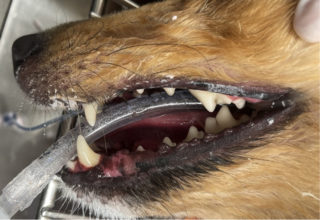
What is plaque?
Plaque is the first stage of dental disease and in animals is the pale yellow, light tan grimy film layer that coats the surface of teeth. Dogs, cats, pocket pets (and yes even humans!) that do not brush their teeth will accumulate this layer in a matter of hours. The composition of plaque itself is a mixture of microscopic food particles, saliva, oral bacteria, and minerals.
Plaque can in its earliest presentation be removed with regular toothbrushing. However if it is allowed to continue without proper dental care and removal it can form tartar.
This stage of dental disease is the most reversible and easiest to treat.
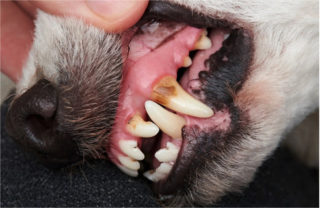
What is tartar?
Tartar is the next step in dental disease after plaque. It is plaque that has mineralised (calcified). Tartar can over time form continual layers on teeth and reach below the gum line to sit in the tooth socket. Tartar looks like a thickened brown film on the teeth with a craggy / raised ‘mountainous’ appearance. Because tartar is mineralised (and therefore very hard) it is not as amenable to tooth brushing for removal.

What is Gingivitis?
Once plaque and tartar are established on teeth and at the tooth / gum margin gingivitis will worsen. Gums are very sensitive tissues and chronic exposure to oral bacteria in plaque and tartar will cause a lot or redness, tenderness, inflammation, prone to bleeding with associated pain. It should also be remembered that red swollen, infected gums are more permeable to oral bacteria; which means that there is a higher chance of oral bacteria being absorbed into the bloodstream.
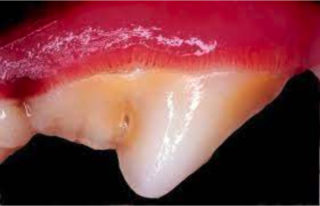
Tissues that can form bacterial inflammatory deposits include kidney and cardiac tissue. This may result in continual disease in these organs (example; kidney dysfunction or infections) or recurrent periods where your pet is unwell and “just not right”. The longer the dental disease continues untreated the more sickness episodes can be expected in our furry friends.
What happens with continual untreated dental disease?
End stage Periodontal Disease: Infected and loose teeth
Over time continual exposure of teeth and gums to bacteria will slowly erode the supporting ligament that holds teeth in place (the periodontal ligament); in time teeth will loosen and become mobile (wobbly) in their bony sockets. This increased gap in the space in-between the tooth and its socket allows further bacteria to sit in this space and accumulate.
In time the end stage of dental disease or “tooth decay” will become evident as teeth with pus around the gum / tooth margin with wobbly teeth that move whenever the pet eats.
Eventually the bony sockets of the upper and lower jaw that the teeth sit in become infected (osteomyelitis) with the bone changing into a more softer and fragile consistency.
Once the gums, teeth and mouth reach this later stage of dental disease it is often irreversible: meaning that dental cleaning and prophy treatments are recommended and instigated but these will not restore the teeth back to complete health and ongoing dental disease is expected in the future requiring ongoing care.
As expected this final stage of dental disease can be quite painful and reduce eating due to pain. Additionally brushing the teeth becomes more difficult due to the increased sensitively of the teeth to pain.
While plaque and tartar can often be seen by looking in your pet’s mouth, sometimes it can be hard to notice when you’re unsure what to look out for. As a general rule, don’t assume that your pet’s teeth are healthy without getting a pet dental health check and maintaining pet dental care.
Here are some common signs of dental disease:
- Bad breath
- Irregular/abnormal eating or drinking: eg. picking up food with their nouth then dropping it
- Broken/loose teeth
- Excessive drooling or pawing at mouth
- Bleeding from the mouth
- Teeth that are no longer white on the surface but are yellow or tan with a rough texture rather than a soothe surface
Benefits of Maintaining Pets Dental Health
By getting to it early, you minimise the likelihood of tartar forming and moving below the gum line and causing your pet serious pain and discomfort as a result of inflammation and infection.
Ensuring your pet receives proper dental care both at home and at the vet is vital. By practising proper dental care, pets are more likely to experience improved overall health that will help them in the years to come.
Pet dental health awareness month is the perfect time to book your best friend into your local veterinary clinic for a check-up.
At Clyde Veterinary Hospital, we provide dental health services for dogs, cats, rabbits, rodents and ferrets. We pride ourselves on treating animals in our state-of-the-art clinic and using gold standard service and dental equipment.
With dedicated dog and cat treatment areas, you can trust that your beloved pet will receive the highest quality, tailored care. We use the best pet dental care products and perform rigorous pre-anaesthetic testing to help ensure your pet receives the best treatment possible.
If your pet is showing signs of dental problems or you’d like to make sure your pet’s health is the best it can be, give us a call on 03 9052 3200 or make a booking online today.
What You Can Do?
Clean Their Teeth Regularly
Few pet owners take the time to give their animal’s teeth a regular or dedicated clean, but this is without question the gold standard in preventative care.
We strongly encourage the use of a dedicated species-specific toothbrush or “finger brush” which is a specially designed plastic overlay that you place over your finger and use to brush their teeth directly, and which gives much better tactile feedback and a better experience for your pet.

Using a dedicated dental paste is really the gold standard. Dedicated pet-specific formulations are available which have a palatable taste for pets, and which provide additional benefits such as mouth freshening and prevent plaque build-up.
We do recommend products such as Oxyfresh Pet Dental Gel, which is completely odourless and tasteless and made from natural ingredients.
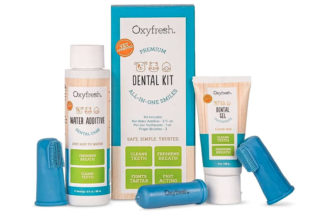
We DO NOT recommend using human toothpaste to clean your dog or cat’s teeth, as these can contain ingredients that can be harmful to dogs or cats if used over an extended period and in some formulations contain ingredients which can be toxic to pets.
It’s important that you remain committed to a daily process of brushing in order to maintain the benefits of a regular dental regime, and it’s important to quickly get your pet used to the somewhat unnatural process of having their teeth brushed.
Here are some tips for gradual introduction to tooth brushing for your pet:
- Start by gently lifting up your dog or cat’s top and bottom lip one side at a time and lightly rubbing their teeth with your finger once a day. Once they become used to this, you should begin use of the finger or tooth brush.
- Once your pet is used to you handling their mouth and rubbing their gums, use the finger brush (WITHOUT) toothpaste to rub the gums. Brush with gentle circular motions.
- Finally introduce a small blob of toothpaste to your pet onto their gums before applying this onto the fingerbrush. This will get them used to the taste of the toothpaste. Then apply the toothpaste to the finger brush and start gently brushing each row of teeth, top and bottom left and right using circular motions. Concentrate on cleaning the outside (cheek-facing) surfaces, as most pets will not allow you to brush the inside (tongue facing) surface of the teeth. Be sure to clean the back upper molars and canines, as these teeth tend to quickly build up tartar.
Be sure to reward them after their toothbrushing with play, petting or a favourite activity, to positively reinforce the brushing process
We recommend starting your pet out as young as possible while they are still puppies or kittens, as they will be far more receptive to brushing if you begin at an early age.
Use Specially Formulated Dental Dry Food
A number of dog and cat food manufacturers now make several varieties of dry food formula which has been specially designed to abrasively prevent the build-up of plaque or tartar on your pet’s teeth and gums.
At Clyde Veterinary Hospital, we strongly recommend Hills Prescription Diet t/d Dental Care for Dogs and Cats –
This diet features a specially formulated, species-specific kibble shape and size, with “fibre matrix technology” for maximum plaque reduction. Essentially the kibble biscuits clean the teeth just by the pet chomping them up and eating them!
Hills t/d comes in a formulation for cats as well as various sizes for dogs
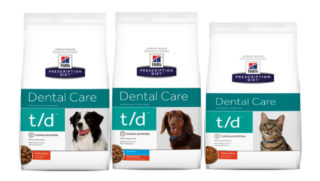
Use Dedicated Dental Chews
Similarly, several manufacturers make dedicated dental chew treats for dogs, which are a great-tasting way to supplement a daily brushing regime, and provide a little reward for putting up with the hassle of brushing.
Add a Specialised Dental Formula to Their Drinking Water
Oxyfresh have also come up with this extremely clever way of destroying bacteria and removing plaque – a dental additive solution you can mix in with their regular water – it’s completely colourless and odourless so they’ll never even know the good they are doing themselves every time they go to the water bowl – and it’s effective for both dogs and cats, or indeed any animal species.
We don’t recommend relying primarily on this as a preventative measure, but it can certainly help improve the effectiveness of a more hands-on dental care regime.

Give Dogs a Raw Bone
Although this is one preventative measure your dog will truly relish, we recommend exercising caution with this. Always supervise your pet when they are chewing a bone.
Importantly NEVER give your dog a cooked bone, as they are liable to splinter and can seriously injure your pet.
Always give your dog a human-grade meat bone (some preservatives used in inferior meats contain substances that can harm your dog), with enough meat still on to retain a degree of softness, and make sure the bone is large enough that they won’t attempt to swallow it.
Chewing on the bone’s rubbery surface can help remove plaque and tartar build-up and strengthen your dog’s gums, providing improved resistance to dental decay.
We recommend a maximum of 1-2 bones per week, and remember to try to leave a minimum 3 day gap between bone treats.
See Your Vet Regularly
This one may seem obvious, but it’s important that your pet has regular dental check-ups from an early age – you don’t want them having to live with a lifetime of tooth or other dental issues, which can lead to a loss of appetite, and restrict their enjoyment of life.
Only a professional dental check can properly diagnose and treat the often deeply hidden teeth or gum issues that can lurk deep within your dog or cat’s mouth.
Animals will also benefit from dental scaling, and your vet can advise if this would be appropriate and beneficial for your pet. Depending on the level of build-up, some dogs may need a yearly scale and polish.

Ultrasonic scalers are handheld devices which use ultrasonic vibrations to remove hard, calcified deposits from your pet’s teeth. They also create shockwaves that disrupt bacterial growth, while also washing and flushing pockets between teeth and any exposed root surfaces with water.
The procedure is usually followed by a professional tooth polish, which smooths the surface of the tooth to minimise bacteria and plaque build-up.
We do strongly caution against any lay dental practitioners who claim to perform dental scaling free of anaesthesia. For starters, the procedure can be painful and distressing for your pet, but just as importantly – it’s been shown to be ineffective as a preventative measure – in most cases, your pet is simply not going to allow anyone to insert anything deep enough into their mouths to provide for a complete and effective clean.
A Team You Can Trust at Clyde Vet
We have a team of trusted veterinarians who are leaders in pet care.
We value preventative care to keep your pet healthy and endeavour to identify any concerns before they become a bigger issue.
Book an Appointment Today
Like humans, dogs and cats can also experience anxiety and stress, which can pose a significant challenge for pet owners.
It is important for pet owners to recognise the signs of anxiety in pets and understand what they can do to help their pets feel more at ease and relaxed. This may include specific strategies to help alleviate anxiety and stress or even the use of medication in some circumstances.
Dog Anxiety

Despite their cuddly companionship and love for attention, dogs can experience anxiety from time to time. Some dog breeds are particularly prone to experiencing anxiety.
As a dog owner, it is important to understand how anxiety impacts your pet’s well-being and quality of life.
Signs of anxiety in dogs
- Prolonged or incessant barking
- Destructive behaviour
- Excessive panting or drooling
- Excessive pacing or trembling
- Quieter than usual, sleeping more, depressed state
- Long car trips
Triggers for anxiety can be multiple but can include separation from owners, boredom, changes in routine, loud noises, illness and unfamiliar environments.
How to help your dog
There are several things that owners can do to help alleviate anxiety in dogs, but first, it is crucial to attempt to find out the cause of their anxiety. By discussing your dog’s anxiety symptoms with a qualified veterinarian, you can narrow down the likely cause(s) and explore strategies to help your furry friend.
Separation Anxiety
With separation anxiety being one of the most common anxieties there are a few things you can try at home to ease their symptoms. If your dog is used to you being at home for large periods of time it is important to gradually acclimatise your dog to being alone rather than suddenly leaving them on their own.
Signs of anxiety in dogs
Dog separation anxiety training begins with only a few seconds away from your dog, gradually increasing this interval each time you leave their sight. Separation anxiety training has proven to be one of the most effective strategies for dealing with dog anxiety.
Providing your pet with a safe and comfortable space, where they can retreat and relax when they feel overwhelmed can also help reduce their anxiety. Exercise, play, and positive reinforcement can also be effective strategies for reducing anxiety.
If your pet suffers from an anxiety disorder, a veterinarian may find it necessary to prescribe medication designed to help manage stress.

Cat Anxiety
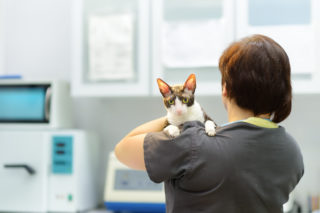
While cats are often seen as independent animals, they can also experience anxiety. Common causes of anxiety in cats include loud noises, new people or pets in the home, trips to the vet, or changes in routine. If your cat is anxious, they may hide, groom excessively, show aggression, or avoid social interaction.
Signs of anxiety in cats
- Hiding
- Decreased activity level
- Change of mood (eg. More quiet than usual, sleeping, aggression)
- Change in social interaction (eg. Avoiding owners interaction)
- Changes in litter box habits (eg. Urinating outside the litter box)
- Excessive vocalisation / meowing
- Reduced appetite
- Compulsive behaviours (eg. overgrooming) increased night activity, destructive clawing of furniture)
Causes of anxiety can be varied but can include; loud noises, changes in normal routine or changes in the household, new people or pets in the home, and trips to the boarding cattery or veterinary clinic.
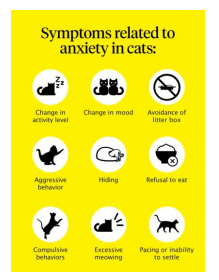
How to Help Your Cat
Some strategies to help ease your cat’s anxiety include:
- Creating a safe and secure environment such as a designated space where they can retreat when feeling overwhelmed
- Providing hiding spots (eg. boxes), perches, elevated wall platforms, cat trees, perches & hammocks.
- Regular interactive play (eg. feather / chaser wands, tunnel structures, puzzle toys which treats can be put in, or toys resembling prey)
- Consistency in their feeding schedule
In some cases, your cat may need medication or other treatments to manage their symptoms. If you believe your cat is still anxious after trying the above strategies, your veterinarian will be able to discuss other options with you.
Need Professional Help?
Anxiety is a common issue affecting both dogs and cats, and can significantly impact their well-being. By being aware of what triggers their anxiety and taking steps to address it, you can help your pet feel more relaxed and safe.
If you are concerned about anxiety in your dog or cat, the team at Clyde Veterinary Hospital is here to help. Simply give us a call at (03) 9069 4088, email us at info@clydevet.com.au or use our online form to book an appointment with a veterinarian today.
Our pets are an integral part of the family and we want to keep them safe and healthy at all times. If you have a pet you need to be aware that something as simple as feeding them the wrong food could lead to serious problems.
Familiarising yourself with common pet poisons in your animal is advisable to prevent potential toxicities. If poisoning should occur, it is also beneficial to recognise that the substance is toxic in order that prompt veterinary treatment can be sought.
If you suspect that your pet has ingested something dangerous, it is essential you visit a vet straight away. Better to be safe than sorry when it comes to your beloved pet.
Understanding toxic foods for pets
Certain human foods can cause severe health problems if ingested by a pet. In some extreme circumstances, the wrong food can be life-threatening. Certain foods can be more toxic to one species than another, so it’s important to familiarise yourself with what is safe.
Common Toxins in Cats:
There are several foods toxic to cats that can cause a range of health problems, some even life-threatening if consumed.
Onions, garlic, chives, and leeks
Onions are part of the Amaryllidaceae family. This genus Allium also includes garlic, chives, and leeks.
Allium species contain sulfoxides (sulfur-containing compounds), which are readily absorbed by the gastrointestinal tract and when absorbed into the bloodstream disrupt red blood cell membranes, resulting in red blood cell rupture which can result in anemia. As little as 5g/kg (or 20g in the average-sized 4kg cat) is enough to cause toxicity.
Breakdown products from red blood cell rupture may also result in kidney damage or failure.
Cats remain more sensitive to this form of poisoning than dogs (although this remains a toxic risk in dogs).
Signs to look for: Weakness, lethargy, pale gums, collapsing, vomiting.
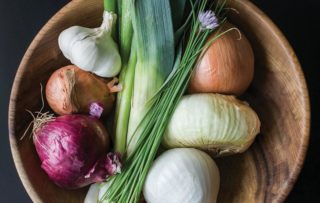
Grapes, currents, raisins and sultanas
While the exact mechanism of toxicity and amount required to produce this remains unknown this food group is known to cause kidney damage and, in some cases, can result in kidney failure.
Signs to look for: lethargy, vomiting, diarrhoea inappetence, seizures.
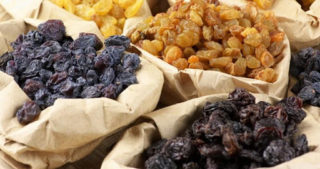
Feeding exclusively fish, particularly if cooked or smoked (eg. salmon, tuna)
Feeding a diet comprised solely of fish is not advised in carnivores as this can result in Thiamine (Vitamin B1) deficiency. Thiamine is essential to carbohydrate, amino acid, and fatty acid synthesis and metabolism. Thiamine can be destroyed by heat, sulphur preservatives, and in diets high in thiaminase (an enzyme that breaks down Thiamine) such as raw fish. Thiamine deficiency results in progressive neurological signs with the brain being particularly vulnerable as it requires Thiamine for many critical cellular processes.
Signs to look for: Early onset vomiting and inappetence followed by possible seizuring, impaired vision, weak or wobbliness on legs, head tilt.
Dairy Products
Many dogs and cats are lactose intolerant, which means that dairy products consumed can cause gastrointestinal upset. Milk is only required in the nursing stages of puppies and kittens under 6 weeks of age. Therefore, if milk is desired as a dietary addition in an adult animal a pet milk is advised (eg. Whiskas Milk Plus Lactose Free milk for Kittens & adult cats).
Dog food
While dog food might not be toxic, it can lead to nutritional deficiencies and imbalances if consumed by cats. Generally dog food contains insufficient levels of the following nutrients required in cats:
Protein: Cats are strict carnivores requiring a higher protein diet than dogs (which are omnivores eating both meat and plant-based material). Most commercial dog foods are too low in protein to meet a cat’s protein requirement. Likewise feeding a cat a “vegetarian” or “vegan” diet is dangerous and completely inappropriate for their metabolic needs and will result in severe illness and death if continued to be fed.
Signs to look for: inappetence, weakness, lethargy, seizures, coma
Remember a cat does not have a choice in what it eats and must consume meat! Pet owners’ beliefs should not be forced on our pets at the cost of their health and well-being.
Taurine: Cats, like people, cannot make their own taurine naturally in their bodies. Cats must therefore obtain taurine from their diet. Most dog foods do not have a high enough taurine content for cats. Signs of taurine deficiency include digestive upset, loss of vision, and heart problems.
Niacin: Cats are also unable to make their own niacin vitamin within their body. Animal tissue is high in niacin, so a high-protein diet is also required in this respect.
Vitamin A: Again, cats cannot produce their own Vitamin A and must obtain it from their diet. Dog food is too low in this vitamin for cats. Signs of Vitamin A deficiency include weak muscles, dull hair coat and night blindness.
Arachidonic acid: This fatty acid is unable to be produced naturally in cats whereas dogs create arachidonic acid themselves. Dog food, therefore, contains lower amounts than cat food. Signs of deficiency can include liver and kidney disease and various skin diseases.
Acetaminophen (Paracetamol)
If you feel your cat is in pain it is often best to consult a veterinarian before administering home medications.
Acetaminophen (Paracetamol) is highly toxic to cats due to their inability to metabolise this drug due to their body lacking the required enzymes. In order for cats to metabolise Acetaminophen they must use another metabolism pathway which results in toxic metabolites (breakdown products) being produced.
Toxicity is characterised by two processes:
- The inability of red blood cells to carry oxygen around the body results in low oxygen and collapse with blue/dark gums and struggling to breathe. This may also result in kidney damage
- Liver toxicity with liver tissue damage and failure
In cats, toxicity can occur with as little as 40mg of Paracetamol ingested in an average 4kg cat! Compare this to dogs where toxicity can occur in the same size 4kg dog but with a minimum toxic ingestion of 400mg. This illustrates the cat’s sensitivity to this toxin and marked inability to process it.
Signs to look for: Dark brown/muddy gum colour or blue gum colour, increased heart rate and respiratory rate, weakness, collapsing, depression, weakness, vomiting, hypothermia, yellow gums or skin (icterus), facial or paw oedema (fluid swelling)
Common Toxins in Dogs:
As dogs love wandering around the home trying to find food, it’s important to be mindful of what food is in reach. There are many toxic foods for dogs that you may have around your home and yard without even realising.
Macadamia nuts
The process involved in producing toxicity from macadamia nuts remains unknown however even consuming small amounts of these can lead to very serious illness. It should also be kept in mind that macadamia nuts can be coated in other products that are toxic to pets such as chocolate, xylitol sweetener, and grape products.
Signs to look for: weakness, staggering, vomiting, tremors, hyperthermia.

Chocolate
While chocolate is a toxic food for dogs and cats, dogs are more likely to be affected as cats are usually too discriminating to eat chocolate in large quantities.
The severity of chocolate toxicity depends on the type of chocolate ingested, the amount and the size of the pet.
Chocolate contains methylxanthines; namely theobromine and caffeine
Darker and more bitter chocolate (eg. higher percentage cocoa and cooking chocolate) contains more theobromine and caffeine and hence tends to be more toxic than milk and white chocolate but again this will depend on the quantity consumed.
It is also worth remembering that some chocolate products contain other toxins such as coffee beans, macadamia nuts, raisins and xylitol.
Signs to look for: hyperactivity, increased heart and respiratory rate, vomiting, diarrhoea, increased thirst, hyperthermia, tremors, and seizures.
Xylitol
Xylitol is a sweetener used as a sugar substitute in many pharmaceuticals, oral care products and as a food additive. It is found naturally in fruits such as berries and plums as well as corn, oats, mushrooms, lettuce and many trees. Commercially used Xylitol is extracted from corn fibre or birch trees and has gained popularity as a sugar substitute due to its low glycaemic index and dental plaque fighting properties.
Products containing xylitol include:
- Oral care products (eg. Mouthwash, toothpaste, sugar-free gum, breath mints)
- Foodstuffs (eg. Candy, baked goods, peanut butter, pudding snacks)
- Supplements and over-the-counter medications (eg. cough syrup, chewable or gummy vitamins, nasal sprays, skin care products, laxatives, digestive aids, allergy medications, mouth lozenges, sleep supplements)
- Pharmaceutical medications especially those formulated as quick-dissolve tablets or liquids.
Xylitol is extremely toxic to dogs. The Xylitol is absorbed into the bloodstream which causes a rapid release of insulin from the pancreas which results in a marked drop in blood sugar (hypoglycaemia) which can be life-threatening. Xylitol is also known to cause seizures as well as liver failure however this process is poorly understood.
Signs to look for: vomiting, lethargy, weakness, wobbliness, tremors, seizures, coma.
Are plants dangerous to pets?
Certain plants contain toxins that can cause a range of health problems if ingested ranging from mild to severe.
Familiarise yourself with what houseplants are toxic to pets so you know what plants to keep away from your home. You should also make sure there are no toxic plants growing in your garden that could be a problem for your pets.
Lilies
Lilies are one of the most common toxic plants for cats. Ingestion of any part of this plant (flower, stamen, leaves or stems) can cause kidney failure.
All members of the genera Lilium and Hemerocallis should be considered nephrotoxic to cats and potentially dogs. This includes the Easter lily (Lilium longiflorum), tiger lily (Lilium species) and daylily (Hemerocallis species), among many others.
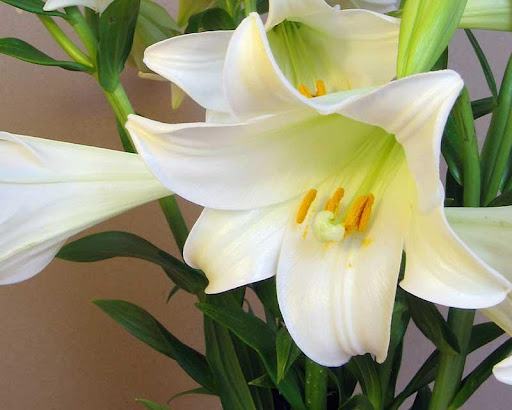
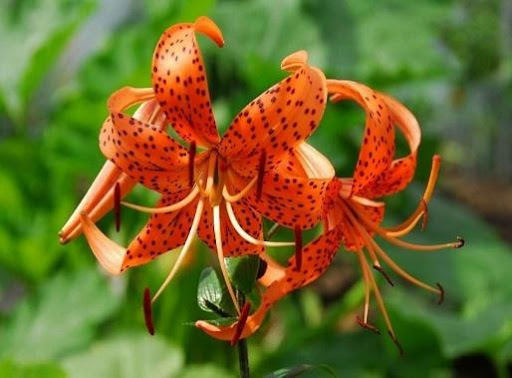
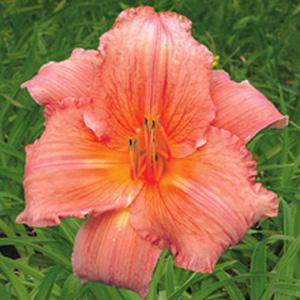
Signs to look for: Initial depression, vomiting, inappetence. If allowed to progress lily toxicity can result in kidney damage and failure.
Sago palm
Part of the Cycad/Cycas, Microzamia or Zamia genus these palms are also known as Coontie palms, Cardboard palms, Japanese cycad, Cycads, or Zymias, sago palms and are readily available for purchase in stores ranging from small nurseries to the garden sections of large home improvement stores. All parts of the sago palm plant are toxic.
Signs to look for: Gastrointestinal irritation with depression, drooling, vomiting and diarrhoea. Neurological signs including weakness, wobbliness, tremors, and seizures. If left untreated advanced signs may include liver damage with yellow skin or eyes (icterus), increased thirst and urination and dark urine. With liver disease decreased blood clotting may also occur resulting in bleeding both internally and externally.
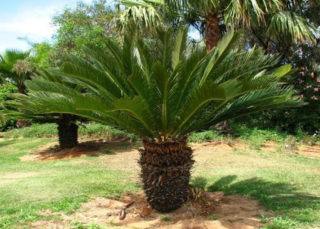
Aloe vera
While aloe vera can be beneficial to humans, it can cause vomiting, diarrhoea, and digestive upset in dogs and cats if ingested.

Azalea and Rhododendron
Azaleas and Rhododendrons are classified as part of the same family with all parts of the plant including the flower, leaves and shrub being toxic.
These plants contain a toxin called grayanotoxin, which disrupts the electrical pathway in muscle tissue including heart muscle.
Signs to look for: Gastrointestinal signs: inappetence, drooling, vomiting diarrhoea, abdominal pain. Cardiovascular signs: abnormal heart rate, low blood pressure, Neurology signs: depression, muscle tremours, blindness, seizures, coma.

It is important to note that these lists are by no means exhaustive and there may be other toxins that may cause potential health concerns in your pet.
What to do if your pet is unwell?
Contact your veterinarian immediately for guidance on the best course of action. Observe any symptoms and follow your vet’s recommendations for treatment, which may include medication, rest, or changes to their diet or environment. Prompt intervention can be crucial for a successful recovery, so don’t hesitate to seek help if you have concerns about your pet’s health.
A vet you can trust at Clyde Veterinary Hospital
We have a team of trusted veterinarians who are leaders in pet care.
We value preventative care to keep your pet healthy and endeavour to identify any concerns before they become a bigger issue.
If you have any questions or would like to book an appointment please give us a call at (03) 9069 4088 or email us at info@clydevet.com.au
Just like every other member of the family, your pet’s mental health is important for their long-term wellbeing. If your pet is anxious, bored or without much stimulation, over time it can seriously affect their physical and mental health and over time their relationship with their owners.Luckily, there are some simple changes you can make to your cat or dog’s everyday experience that can help them live a happier and healthier life. Here are some of the expert pet enrichment suggestions from the team at Clyde Vet Hospital – and some of the signs you need to watch out for in your pet.
How to tell if your pet is unhappy
Nobody knows your pet like you do, which means you’re the perfect person to spot whether or not they need a little help. Even small changes in behaviour can point to a bored or anxious pet that needs more stimulation in their life.
Tips to help your pet live a happier life
Clyde Vet Hospital has a number of tips and tricks to help your furry friends get back on track. These pet enrichment ideas are a great place to start when trying to overcome any pet anxiety in your home.
Signs that your dog may need enrichment

Dogs that are bored or not stimulated enough need to find an outlet to relieve their emotional stresses and pent-up energy. This is typically the case in younger dogs that have high energy levels. Signs to look for can include:
- Excessive barking, sometimes for no specific reason: this may be be due to relieving boredom or your pet may be looking for interaction with you via a response to the barking.
- Chewing or excessive licking of objects (eg. shoes, couches, kids toys, small household items / decorations): the reason for this behaviour is similiar to why dogs bark however there is a danger that accidental ingestion of these objects can occur. Ingestion of foreign objects may cause abdominal pain and in some cases result in the object becoming stuck in the gastrointestinal tract which may require potential surgical intervention.
- Excessive digging: digging is a natural evolutionary pass time for dogs as in the wild they will bury prey / food and come back for it later. However when this becomes excessive and results in destruction to lawns, garden beds, vegetable patches it can become problematic.
- Uncharacteristic aggression with family members or strangers: This may be due to overstimlation and no channeling of pent up energy or frustrations.
- Increased pacing: again this is often due to boredom and pent up energy but please be mindful that may not be the only reason for this behaviour. Dogs in pain or even with neurological disease may also present with this problem.
- Increased quietness or depression: older dogs that are more settled in their routine may show boredom as increased quietness and lethargy
How to enrich your dog’s life
Most dogs are incredibly active animals, especially high activity level and working dog breeds. Working dog breeds are also highly intelligent and thus can get bored and frustrated easily if their mental needs are not being met.
As such dogs require regular exercise. Being cooped up in a small backyard all the time can be boring and can result in behavioral problems developing; like those mentioned above. Behavioural problems can be difficult to break if they become a long term habit.
Dogs are pack animals and as such they require other people and animals to interact with.
Tips for dog enrichment:
- Daily walks: Dogs should be walked at least once a day (twice a day for active, high energy breeds). Often going to the park for a walk and a play at ball in off lead parks can be stimulating. Also try new and unique locations (eg. beach) and places to stop along the way for a break and a sit down may also prove rewarding.
- Puzzles, toys: puzzle toys that require problem solving such as mazes where a treat can be hidden (eg. KongⓇ toys) are a great way to keep dogs occupied and as a bous give a reward for their effort if they get the treat out.
- Frozen treats: Making your own frozen “pupsicle” treats is a great way to reward your pet as well as keeping them stimulated. As always please consult your veterinarian if you are concerned about potential toxicity in any of the ingredients you are using.
- Arrange a play-date with another dog: – join a local dog group if you don’t already know any other dogs nearby!
- Owner / dog playtime: sometimes it is you the owner and your time and interaction that will boost your pets mood. So take that extra time every day, even if it is just an extra 5 minutes to have a play and run around with your dog.
Signs that your cat may need enrichment
Whether they’re indoor or outdoor, your feline friend will still exhibit the same basic behaviours if they’re generally unhappy. Signs to look for can include:
- Excessive vocalisations: cats, especially young cats will vocalise in order to communicate. This can become excessive if they are demanding something from you as an owner (eg. food, attention)
- Clawing / scratching furniture: Cats have evolved to scratch their claws on trees to shed the excess nail layer and keep them sharp for hunting. This also serves as a territorial scent mark for other cats in the area. Unfortunately cats do not understand that your chair / couch leg is not a tree!
- Excessive grooming: this can be due to other problems such as infections and parasite burden and pain but in the context of behavioural anxieties it can be due stresses that are misdirected as the cat overgrooming
- Extreme clinginess to you / other family members: There is a misconception that cats are not as affectionate as dogs but this has recently been disproven that cats are indeed as invested in their owners if not moreso than dogs. As such cats if they are sick or stressed will seek comfort and reassurance from their owner.
- Excessive sleeping: this can be due to illness but may well also be a clue that they are not as interested in or stimulated by their surroundings.
- Frequent hiding: Again this can be due to illness but also due to stress
Tips for cat enrichment:
Cats don’t require the same level of exercise as dogs in order to feel comfortable and happy, but they do require lots of mental stimulation and play (especially if they’re an indoor cat). This can include:
- Toys: these can include soft toys (with or without pull string motors for movement), feather wands and laser pointers. Toys that encourage chasing and hunting behaviour are best as they keep the cat stimulated as well as potentially wearing out high activity level cats! Keep in mind that changing over new toys every couple of months is important as cats can get tired of the same toy long term. A good trick is to put a small number of toys in storage and rotate them every couple of months.
- Scratching posts: A few strategically situated scratching posts around the house will still enable the cat to mark their territory, keep their claws healthy and also save your furniture!
- Hiding places and high perches: Cats are evolutionary both predator and prey and as such they like to be high up above everything where they can survey and assess from a safe distance as well as having dark places to hide if they feel threated. Regularly updating their environment with new objects (eg. boxes, wall shelf / perch, cat towers and stations) are a great way to keep them stimulated and comfortable.
- Cat grass: Cats eat grass as it aids in digestion and general health. Having a cat grass plantar in the house that the cat can graze on is a great way to keep them happy & healthy. Cat grass is available as seeds and the fully grown grass from most nurseries.
- Owner / cat playtime: sometimes it is you the owner and your time and interaction that will boost your pets mood. So take that extra time every day, even if it is just an extra 5 minutes to have a play and hide and seek around with your cat.
- Giving your cat multiple different ways to express themselves and their instincts is the key to making sure they’re sufficiently stimulated.

Your local pet experts
If you’ve noticed any challenging or concerning behaviour in your pet and want to make sure that they’re okay physically or mentally, then don’t hesitate to book a visit to the expert veterinarians at Clyde Vet Hospital. We can help you figure out what’s holding your pet back and offer a range of different solutions for a happier, healthier and longer life with you.
Get in touch with our friendly team at (03) 9052 3200, or make an online booking at any time on our website.
Responsible pet owners want the best for their beloved cat or dog, including their skin care. When you notice excessive itching, scratching or discomfort from your pet, it’s time to take action. If a pet looks like they have skin irritation, it could be a sign that something is wrong and shouldn’t be ignored. These behaviours can be a response to a variety of things such as pet allergies, parasitic infestation, a bacterial or fungal infection, dry skin, or boredom.
When a pet is constantly scratching or chewing at their skin, they run the risk of prolonging and worsening any potential skin problems. Knowing the telltale signs of various pet skin conditions will help you find appropriate treatment sooner so you can put an end to your pet’s skin irritation and keep any issues at bay.
Signs of skin irritation in pets
If your pet has skin irritation, you may notice a red wet patch on their skin or coat, or you will catch them in the act of licking, scratching or chewing that area of their skin. You will also notice a few changes to their coat that will signify something is wrong
Some of the more common signs to look out for are:
- Chewing, licking, biting or scratch their own skin
- Hair loss or bald patches
- Rashes
- Dry flaky skin
- A dull coat
- A distinct smell/odour that resembles wet socks
Cause of pet skin conditions
Helping your pet’s skin conditions can feel like a never ending battle. The rash on your pet’s skin could have been caused by them incessantly scratching and tampering with their skin, but there’s most likely an underlying cause to explain why your pet is feeling this level of discomfort.
Pet allergies
Noticing sudden strange patches on your pet’s skin can often raise a few questions such as ‘is my dog injured?’, ‘does my dog have allergies?’, ‘has my cat been attacked?’. The truth is, your furry friend can be susceptible to pet allergies regardless of their breed or age. Allergies can often be triggered by food or environmental triggers such as pollen, dust, grass, mould and other allergens. Testing can be done to determine the trigger so you can try to minimise your pet’s exposure to some of these allergens.
Skin allergies and dermatitis
Dermatitis is the name used to describe skin allergies. Unfortunately, skin allergies are often a long term, chronic condition that will require ongoing treatment for your cat or dog.
Other skin allergies can be caused by contact dermatitis which is often the result of your pet coming into contact with chemicals or plants that cause a reaction.
Parasites
Parasites that commonly affect pets include ticks, fleas, fungal infection, mange, lice, and ear mites. Some parasites cannot be seen by the naked eye until there is a large infestation. It is important you monitor any changes in your pet’s behaviour, and get them tested and treated for parasites if you notice any signs. Leaving parasites untreated can result in further discomfort, skin irritation, and more serious health issues.
Boredom and anxiety
Excessive chewing, scratching or licking isn’t always the result of a physical reaction. Sometimes it can be a sign that your pet is experiencing psychological discomfort and is trying to self-soothe. Identifying what is causing your pet distress, along with finding a way to keep your pet calm, will help to prevent these compulsions.
Pet skin care tips
Whether you’re trying to better manage cat allergies, dry skin, parasites, anxious pets, dog allergies, or recurring skin conditions for your pet, there are a few things you can do to help ensure your pet’s skin stays healthy.
Diet
A proper diet is absolutely essential for your pet to live a happy and healthy life. We’ve already established that skin concerns can be attributed to food allergies, but they can also be the result of an improper diet. Feeding your dog or cat food that is poor quality or lacking in certain nutrients can affect the condition of their coat and underlying skin.
Medicated shampoo
Unlike regular shampoo, medicated shampoo can help provide relief quickly and effectively for pets with skin conditions. Medicated shampoos are specially formulated with active ingredients such as antibacterial agents to treat common pet skin conditions.
Monitor faeces
Faecal testing is the best way for your vet to check your pet for intestinal parasites.
Testing your pet’s faeces every six months can ensure that your pet isn’t suffering from worms. Regular testing can help catch parasites early, making them easier to treat.
Keep a diary
Keeping a record of your pet’s symptoms, behaviour, medicine, and meals will help you and your vet to gain a better understanding of your pet’s health.
Diagnosis
As soon as you notice any signs of skin discomfort in your cat or dog, take them to the vet for a check up. Getting your pet checked for any allergies or parasites can help prevent symptoms from spreading, and allow for faster treatment.
Prior to trying any medicated creams, or if you are unsure what treatment is best for your pet, the friendly team at Clyde Veterinary Hospital can offer the best advice during a consultation. If you have noticed any changes in your pet’s behaviour, or think your pet might be suffering from parasites or an allergic reaction, please contact us on (03) 9052 3200 or make a booking online today.
Giving your best friend the best chance at living a longer, healthier life is the goal of every loving pet owner. Doing what’s best for your pet goes beyond keeping it well fed and hydrated, and extends to ensuring that your fur baby receives regular pet dental care at home and at the vet.
Proper dental care for pets helps to prevent and protect animals from a number of health issues that arise when their teeth aren’t properly looked after. Additionally, when an owner takes the time to maintain their pet’s dental health, they help to improve their pet’s well-being and minimise the likelihood of harmful bacteria from the gums passing onto the major organs in your pet’s body.
National pet dental health month is the perfect reminder of why it’s important to look after your pet’s teeth and gums. By recognising the signs of dental disease and taking steps to prevent it, you can help improve the quality of life for your pet for the years to come.
Recognising dental disease in pets
Poor pet dental health in your dog, cat or bunny often first presents itself in the teeth, gums and surrounding areas of your pet’s mouth.
The slow buildup of plaque can cause issues over time, eventually spreading bacteria throughout the body. If not removed correctly, the plaque can also harden and become tartar, which will need to be removed by a veterinary clinic offering pet dental health services. Fortunately, tartar above the gums can be removed and cleaned by a professional. By getting to it early, you minimise the likelihood of tartar moving below the gum line and causing your pet serious pain and discomfort as a result of inflammation and infection.
While plaque and tartar can often be seen by looking in your pet’s mouth, sometimes it can be hard to notice when you’re unsure what to look out for. As a general rule, don’t assume that your pet’s teeth are healthy without getting a pet dental health check and maintaining pet dental care.
If your pet has a buildup of plaque and/or tartar that has caused its’ dental health to deteriorate, you’ll likely recognise one or more of the following signs:
- Bad breath
- Irregular/abnormal eating or drinking
- Broken/loose teeth
- Excessive drooling
- Bleeding from the mouth
Once you notice any of these signs, it’s a good idea to go to the vet to get your furry friend checked out.
Benefits of maintaining pet dental health
Ensuring your pet receives proper dental care both at home and at the vet is vital. By practising proper dental care, pets are more likely to experience improved overall health that will help them in the years to come. Having a good level of dental care for dogs, cats, bunnies and more helps them in five key areas.
The most important reason to maintain a thorough level of dental care for pets is to help prevent the likelihood of organ damage caused by dental diseases or infections. You also minimise the potential for the gum disease to get worse. Any bacteria that makes its way into the bloodstream has the chance to spread to the heart, liver and kidneys of your pet, potentially making them extremely sick.
Additionally, proper dental care for cats and other animals can help prevent them from losing teeth, feeling pain in their mouth region or having bad breath. This helps them live freer and helps to ensure they can eat, drink and behave as normal.
Quality and affordable pet dental care
Pet dental health awareness month is the perfect time to book your best friend into your local veterinary clinic for a checkup.
At Clyde Veterinary Hospital, we provide dental health services for dogs, cats, rabbits, rodents and ferrets. We pride ourselves on treating animals in our state-of-the-art clinic and using gold standard service and dental equipment.
With dedicated dog and cat treatment areas, you can trust that your beloved pet will receive the highest quality, tailored care. We use the best pet dental care products and perform rigorous pre-anesthetic testing to help ensure your pet receives the best treatment possible.
Book an Appointment Today















